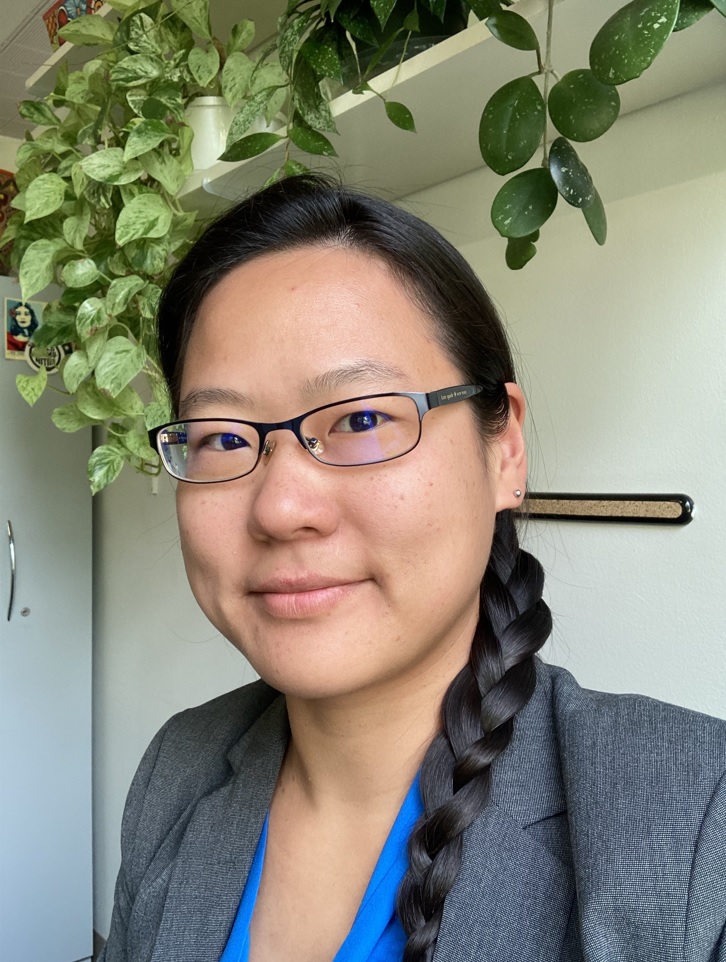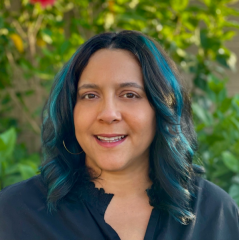ASU team plays key role in $100M initiative to foster equitable improvement in the arts

At a Learning Community event hosted by the Wallace Foundation, Christina You-sun Park (left), assistant director for ASU's Studio for Creativity, Place and Equitable Communities, works with Elena Serrano, program director at Eastside Arts Alliance. Photo by Claire Holt
A team of researchers, collectively known as the Community Orientation Action Research Team (COART), has been selected to provide research support during the first phase of the Wallace Foundation’s new five-year arts initiative focused on arts organizations of color.
The initiative was created as part of the foundation’s efforts to foster equitable improvements in the arts.
The COART team includes researchers from Arizona State University's Studio for Creativity, Place, and Equitable Communities (otherwise known as the Studio), the Equity Center at the University of Virginia and ASU’s School of Social Transformation,
The team is led by Christina You-sun Park, assistant director of the Studio, Sherica Jones-Lewis, director of community research for the Equity Center, and Mako Fitts Ward, assistant professor in ASU’s School of Social Transformation, with initial support from Ascala Sisk, former senior policy fellow at the Studio.
The organizations’ work and research are focused on a guiding question: Facing strategic challenges, how can and do arts organizations of color leverage their experience and histories of community orientation to increase their resilience, while sustaining their relevance?
ASU was awarded $948,000 for Phase 1 of the project, which is 18 months, with a possibility of being selected to continue to Phase 2. UVA's Equity Center will receive a subaward totaling $358,398 of the above Phase 1 funds.
The role of the ASU-UVA COART team is to work with the 18 nonprofit arts organizations receiving funding, which represent a diverse range of artistic disciplines, geographic locations and communities served.
Participating organizations are 1Hood Media; the Arab American National Museum; BlackStar; Chicago Sinfonietta; a collaborative comprising EastSide Arts Alliance, Black Cultural Zone and Artist As First Responder; Esperanza Peace and Justice Center; Harvey B. Gantt Center for African-American Arts + Culture; Museo de Arte Contemporáneo de Puerto Rico; PHILADANCO! The Philadelphia Dance Company; Pillsbury House + Theatre; Pregones/Puerto Rican Traveling Theater; Queer Women of Color Media Arts Project; Ragamala Dance Company; Rebuild Foundation; Self Help Graphics & Art; Theater Mu; the Laundromat Project; and the Union for Contemporary Art.
Christina You-sun Park
Each organization will receive five years of funding to develop and pursue a project to address a strategic challenge. In the first phase of the initiative, COART will work with the arts organizations to develop a research plan that explores the relationship between community orientation, relevance and resilience through the grantee projects over the four years of implementation.
“Phase 1 (of the Wallace Foundation initiative) is really a different method of working from how a lot of research is done,” Park said. “We’re making sure to take the time and space needed to set up the research on the right foot, in collaboration with the grantee organizations. This intentional approach of building a strong foundation for the work is embedded within all of the Studio’s programming and research.”
Founded in 2016 by Institute Professor Maria Rosario Jackson, who became the head of the National Endowment for the Arts earlier this year, ASU’s Studio for Creativity, Place and Equitable Communities is an innovative collaboration between Herberger Institute for Design and the Arts and Watts College of Public Service and Community Solutions. The mission of the Studio is to advance the integration of arts, culture and design in community development, planning and related fields in order to help redress historic inequities and create healthy, equitable, more just communities where all people can thrive. The program portfolio also includes a faculty academy, senior policy fellows, creative placemaking curriculum integration, Projecting All Voices fellowships and the Creative Measurement Lab.
"The research (that) Park is leading, in collaboration with the partners of COART and with support from Wallace, is putting into action not only what the Studio has gleaned through other programing, but what we aspire to do: to change industry standards through our mission," said Chandra Crudup, interim director for the Studio.
Mako Fitts Ward
Traditionally, Park said, the research unit is separate from the arts organizations being granted funding.
But, she added, “Wallace wants to ensure that the outcomes of the research are helpful to the organizations. So even the things we’re talking about, the debate around the terminology, for example — instead of dictating that these are the terms that we’re going to research, we’re going to hear from the organizations themselves. This first phase is about careful intentional planning with the organizations, making sure the research is relevant and applicable to them and their communities.”
Park said that the approach is rooted in an acknowledgment that current national research hasn’t always benefited BIPOCBlack, Indigenous and people of color arts and culture organizations. Traditional data indicators for success, for example, don’t represent the true impact of these organizations — which calls for a reevaluation of what is considered “success.”
Park began working with the Studio in 2019. She earned her MFA in sculpture from ASU’s School of Art, then worked for the city of Phoenix’s Office of Arts and Culture, which is where she first encountered Jackson’s work.
“How arts and culture exist within communities has been an interest of mine for a long time,” Park said. “I got into creative placemaking through the way of reevaluating how we see metrics and really thinking about how structural inequities perpetuate issues for neighborhoods. I feel like the way I understood creative placemaking before I joined the Studio was very practitioner-based. The Studio’s programs have a different perspective on it, which is that in order for structural changes to take place, the burden can’t be just on artists and designers. The institutions need to change as well.”
Sherica Jones-Lewis
“The Wallace Foundation’s goal is to identify field impacts through the sharing of the research,” Ward said. “However, for the arts organizations, the challenge is how do you participate in research on how your community engagement contributes to your organizational resilience without taking time and resources away from arts programming and other work? Our job, as the research team, is to create a collaborative process that doesn’t overburden the organizations while also meeting the objectives of the funder, which are to identify best practices and blueprints for the arts field.”
Ward said COART landed on the term “transformative action research” to describe their work.
“There is a strong desire for equitable partnerships between universities, community and sometimes corporate partners,” Ward said. “But the emphasis in those areas is always the action and how the action leads to change, with the emphasis on change. While the change is important, it’s all about process. How do theories of action ultimately inform the ability for arts organizations to justify the impact they make and articulate their impact? How do you create a process that is truly generative and iterative from start to finish? We are trying to figure out how you can hold both.”
More Arts, humanities and education
ASU FIDM students to see their designs on the runway at Uncertainty Fashion Showcase
Nola Hill is perfecting every stitch of her fashion design collection, which she started conceptualizing last summer.She is among…

ASU+GSV Summit brings experts together to discuss innovation in education
This week, Arizona State University President Michael Crow and other university leadership joined education and learning experts…

ASU professor's project helps students learn complex topics
One of Arizona State University’s top professors is using her signature research project to improve how college students learn…




